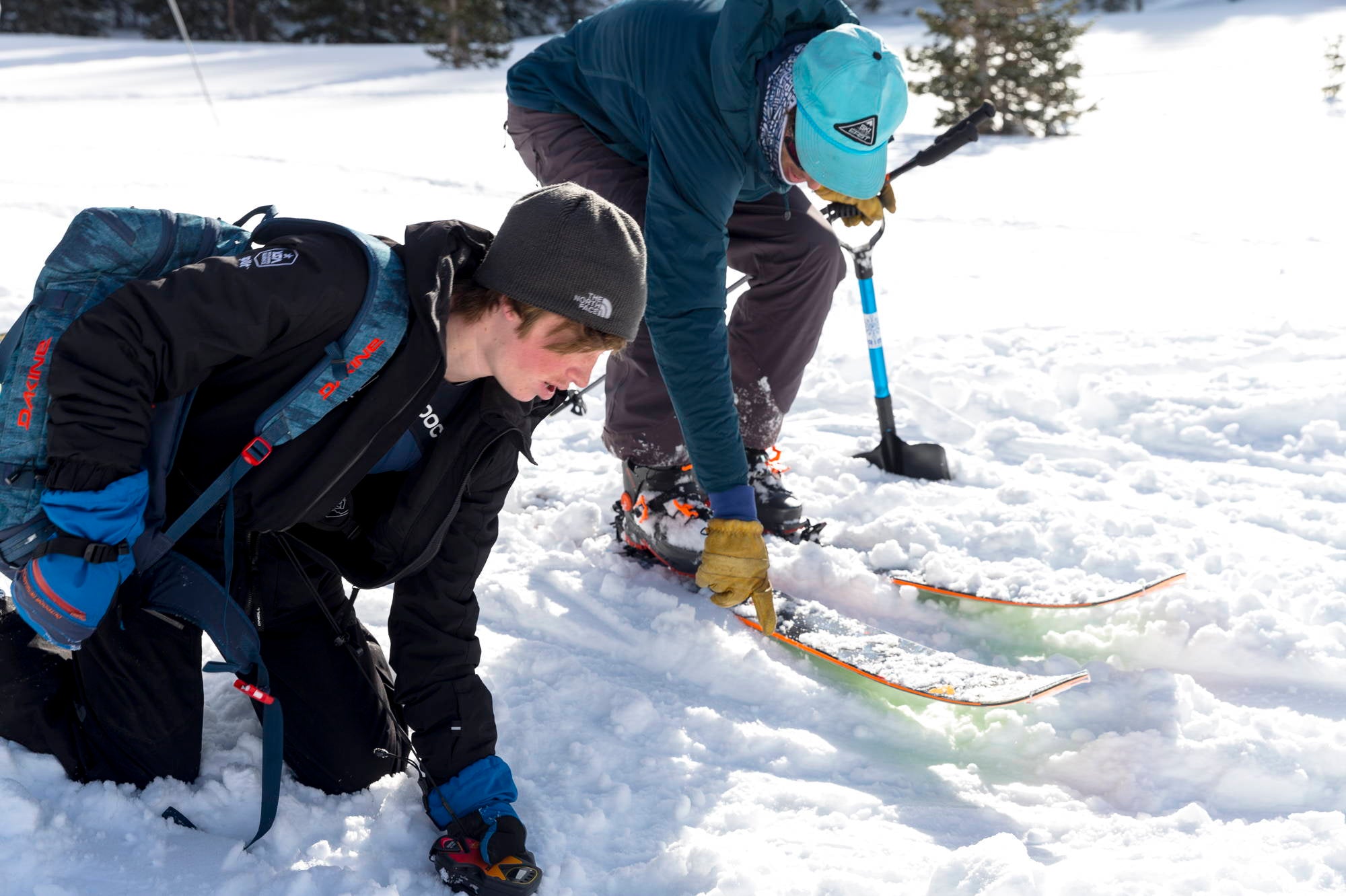This past year Team Rider Erme Catino began teaching avalanche education with the Utah Avalanche Center, and last week he taught their first youth 101 class. In preparation, he put together some refresher points that he will share below. By no means is this a course replacement, but no matter your level of experience it’s always great to revisit materials as everyone is always in a learning environment when it comes to the science world.
All Photos- Sam Watson @samwatsonphotos
Getting into backcountry terrain has never been easier or more popular. Lighter and stronger gear and open gate policies at ski areas, along with general crowding of high-profile ski resorts has motivated skiers to venture off-piste in search of powder turns and solitude. The backcountry can be a magical place, but it deserves respect and can wreak havoc for those who are unprepared. So it’s important to stay on top of your skills and hone in your process when approaching avalanche terrain. If you’re new to the backcountry, the best thing you can do is take a course.
- Read the forecast. One of the most overlooked things is reading the fine print of the avalanche forecast. Often times if you read beyond the danger rating and color rose, you’ll gain beta regarding the finer details of what’s going on. Such as changing weather conditions or specifics about locations that may be suspect amidst the broader forecast.
- Pay attention to obvious clues and recent avalanches. One thing we work on in our Backcountry 101 classes is to always be gathering information while out skiing, and relate it to what the forecast mentioned. Conditions can change, so don’t be afraid to deviate from a plan if conditions don’t line up.
- Practice your avalanche rescue skills. Avalanche professionals are always practicing with their beacons. Reason being: the beacon search should be the easiest part of a rescue, probing and specifically shoveling should take the most time and your beacon skills should be fumble-free. Backcountry Access has great tutorials and handouts on these: https://backcountryaccess.com/portfolio-category/avalanche-resources/ read them again, and go out and practice with your buds. Ideally, you’ll never have to use your gear but if you have to it should be second nature.
- Develop a process. Many avalanche centers have observations from users, read them often. If your center doesn’t, then reading the daily forecast as it changes throughout the week is helpful too. I’m always reading what others are finding and compare it to what I find. I then check the weather to see how much snow and liquid water fell, how hard the wind blew and from where, what the forecast says, and then come up with a plan on where I’m heading.
Two terms that I always try to reinforce are: Terrain and Persistent Weak Layers.
-
Terrain is the key to all avalanche hazards. You can’t control the weather, snowpack, or humans, but you can choose terrain appropriately. If things are spicy out there, you can reign things in on terrain choices - staying on 30-degree slopes with no overhead hazard and avoiding terrain traps.
-
Persistent Weak Layers is a term that should send your radars up when it’s mentioned in the avalanche forecast. These layers are often tricky and warrant your full attention. They can cause large avalanches and are not easily detected. Below is a video that shows what these layers can do. Keep them in your mind if they’re part of your snowpack and consider taking an advanced course to learn more about them.
Lastly, find some solid partners, or a mentor you trust, and continue learning, skiing, and have fun as you develop your skills. At the end of the day we are going out to explore the wildness of the mountains to enjoy something we love doing. Make sure you are having fun but also remember where you are. Going out there is fun, but coming back to your friends and family is the most important part. -Erme Catino



